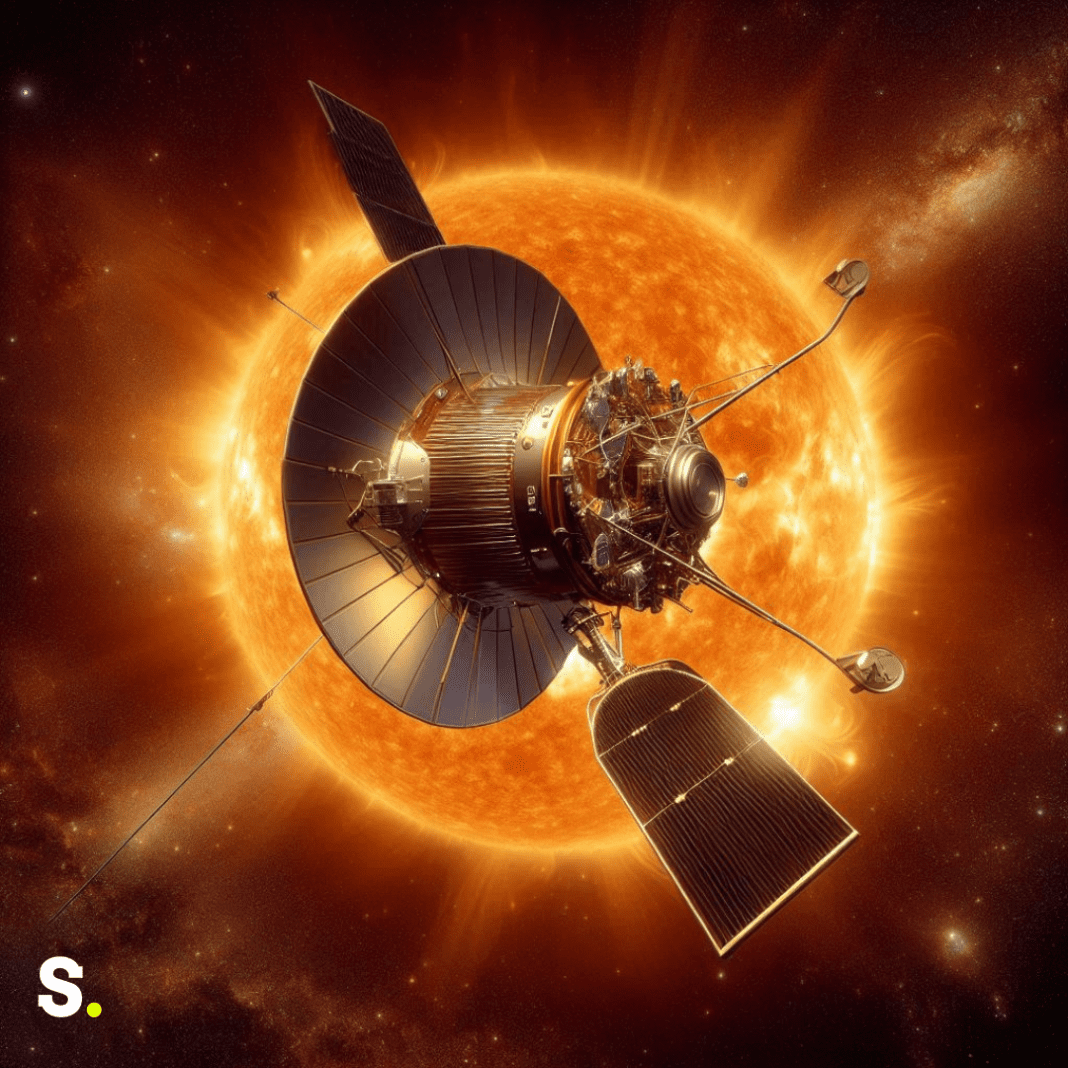NASA’s Fastest Spacecraft Ever
NASA has created the fastest machine humans have ever built. It’s called the Parker Solar Probe, and it has recently matched its own record by flying nearly 400,000 miles per hour! To put that into perspective, that’s fast enough to travel from New York City to Los Angeles in just 20 seconds.
The Parker Solar Probe is on an important mission. It’s the first spacecraft ever designed to fly directly through the sun’s outer atmosphere, called the corona. On June 29, during its 20th close approach to the sun, the probe reached a staggering speed of 394,736 miles per hour. How does it achieve such incredible speeds? One big reason is the sun’s gravity, which pulls the probe faster and faster as it gets closer.
Imagine you are on a swing. As you get closer to the ground, you speed up, and as you move away, you slow down. The sun’s gravity works similarly, pulling the probe closer and making it go faster and faster. This effect, combined with the lack of air resistance in space, allows the Parker Solar Probe to reach unimaginable speeds.
How Does It Go So Fast?
In the vast emptiness of space, there’s not much to slow the Parker Solar Probe down. Once it starts speeding up, it just keeps going! The only times it slows down a bit is when it uses the gravity of Venus to help change its course and get even closer to the sun. These maneuvers are called “gravity assists.” Although they slow the probe down slightly, they actually help it speed up more overall as it gets closer to our giant, fiery star.
Think of gravity assists like slingshots. The spacecraft swings around a planet (like Venus) and uses the planet’s gravity to increase its speed and alter its path. This clever trick allows the Parker Solar Probe to get even closer to the sun, making its mission possible.
Later this year, the probe will get a final boost from Venus. After that, it will reach an astonishing speed of 430,000 miles per hour! At that speed, you could travel across the United States from coast to coast in just 20 seconds. That’s over 500 times the speed of sound! The speed of sound is about 760 miles per hour, so the Parker Solar Probe is really, really fast.
Built to Withstand the Sun’s Fury
The Parker Solar Probe is built to survive extreme conditions. When it gets close to the sun, it will be just 3.8 million miles from its surface. That’s closer than any spacecraft has ever been! To protect it from the sun’s intense heat, engineers designed it with a special heat shield. This shield is made of carbon and is 4.5 inches thick. It faces the sun and gets extremely hot—up to 2,500 degrees Fahrenheit! But just a few feet behind the shield, the instruments inside the probe stay nice and cool, working at room temperature.
The probe’s mission isn’t just about breaking speed records. Scientists are eager to learn more about the sun and how its activity can affect us here on Earth. The sun can sometimes eject huge masses of super hot gas, known as coronal mass ejections, or CMEs. These CMEs can cause problems for us by messing with our power grids and communication networks. In the past, they have even melted transformers and caused power outages.
What the Parker Solar Probe Teaches Us
By flying so close to the sun, the Parker Solar Probe is helping scientists gather important data. They want to understand how the sun’s explosive activity behaves and how it might impact Earth. This knowledge can help us prepare for and protect ourselves against these powerful solar events in the future.
For example, when a CME hits Earth, it can create beautiful displays of the northern and southern lights. However, it can also disrupt satellite communications, GPS systems, and even power grids. Understanding how these solar eruptions occur can help us develop better ways to protect our technology and infrastructure.
The Parker Solar Probe’s journey is a remarkable achievement. It’s pushing the boundaries of what we can do and teaching us more about our amazing universe. Watching this spacecraft fly faster than anything else ever built is an inspiring reminder of what humans can accomplish when we reach for the stars.
To get this close to the sun, the probe must endure temperatures and radiation levels that would destroy most other spacecraft. Its heat shield, which always faces the sun, protects the sensitive instruments inside from extreme heat and radiation. This allows the probe to collect data on the sun’s outer atmosphere, solar winds, and magnetic fields without getting damaged.
The information gathered by the Parker Solar Probe is crucial. By understanding the sun’s behavior, scientists can better predict space weather and its effects on Earth. This can help us prepare for and mitigate the impacts of solar storms, which can disrupt our daily lives.
In addition to its scientific achievements, the Parker Solar Probe represents a triumph of engineering and human ingenuity. It shows what we can achieve when we push the limits of technology and exploration. As the probe continues its mission, it will keep setting new records and providing valuable insights into the workings of our sun.
So next time you think about speed, remember the Parker Solar Probe, the fastest spacecraft ever built. It’s a testament to human curiosity, determination, and the desire to explore the unknown. As it speeds through space, it carries with it the hopes and dreams of scientists and engineers, all working together to unlock the secrets of our solar system.




